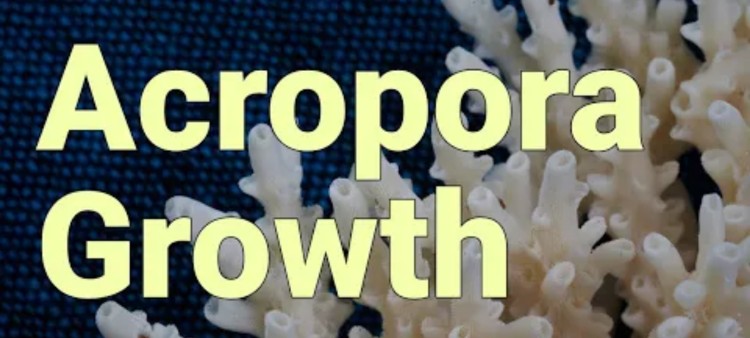Acropora: A Complete Guide to Growth and Frag Recovery Time
- Oct 25, 2021
- Anshika Mishra
- 358 0 0

Did you know that your Acropora undergoes significant internal changes when you frag it? Did you know that it only takes over a month for those changes to return to normal? So how does an Acropora grows a new branch rather than just growing straight up?
You all must look at your coral in the reef tank and wonder about what's happening inside it at some point. Are all of the polyps of Acropora corals connected internally somehow? Here, we are answering a lot of these questions.
In Acropora, there are a few anatomical bits to know about first. A branch of Acropora has a bunch of polyps spiraling around the central core of the branch. The polyps live inside correlates, or chalices raised cups protecting the polyp living inside.
In the central core of the brand, there are numerous channels carrying things like nerve bundles and more throughout the colony. Finally, at the very center of the branch is the axial canals, the largest of the internal channels. The axial canal travels vertically through the entire brand of the coral.
The axial polyp - a distinguishing feature of Acropora corals, lives at the very end of this canal. It is from this canal that new branches are formed. But, it is still not clear how a coral decides where a new branch should be.
When your Acropora coral is growing, the axial polyps bud off new polyps. The skeleton grows throughout this process, and eventually, you have got a new corallite on the edge of your branch with its very own tiny polyp. Sometimes, for unknown reasons, these new corallites bring a bit of racial canal with them, and when this happens, those new polyps become brand new axial polyps and a branch.
Cutting the Coral
Now, something really interesting happens if you cut the branch. Maybe you are trimming a colony that's grown too large, cutting frags to sell or trade. Whatever the reason, when you cut the coral, it triggers a process of rebuilding internally in the coral.
The axial canals normally don't play a large role in calcium transport, except in this case. Nothing much changes immediately. The coral will send signals about the damage through its never-no network, triggering the production and transportation of calcium and other building material to the damaged area. Within weeks, the injury has healed, and the branch has begun growing again, but internally, there is still quite a bit going on.
The axial canal plays a large part in the transportation of calcium to the damaged area. There is so much calcium that little bits of the skeleton have started to grow even inside the central axial canal by day 14 after the fragging.
This random growth of the skeleton in the axial canal peaks around day 21- and the extra skeleton occupies nearly half the canal at this point. After the branch is cut by a month, the axial channel will start to clear up things.
The little bits of skeleton clogging up the central canal have largely dissolved, their material being used for further growth through the branch.
Purpose of the Article
Every reefer needs to know about this topic because often we receive very fresh frag amongst each other. But, unfortunately, these frags sometimes don't do that well, and we chalk it up to our tank's not being the best environment for the corals, or our lights are different, or maybe the frag was just "too fresh."
So, if we give our frag one month to recover before selling them, we'd all have a better success rate. Give that axial canal time to clear up!






About author